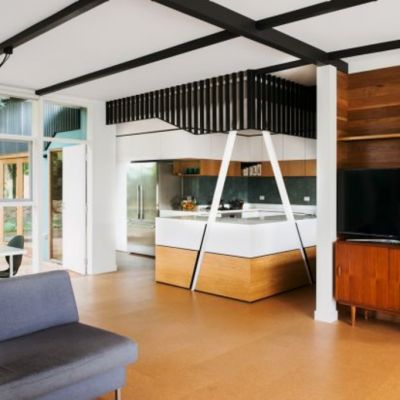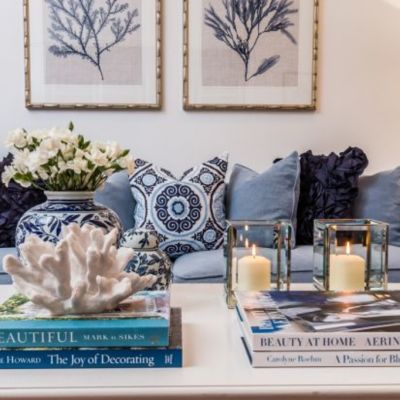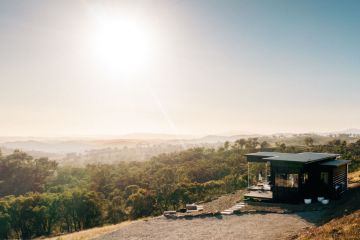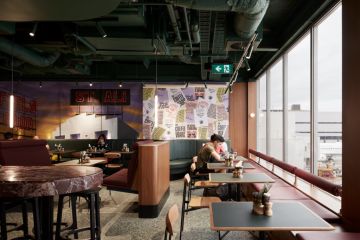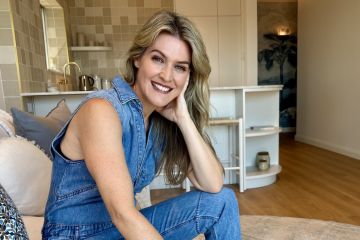The 2017 Australian Interior Design Awards shortlist
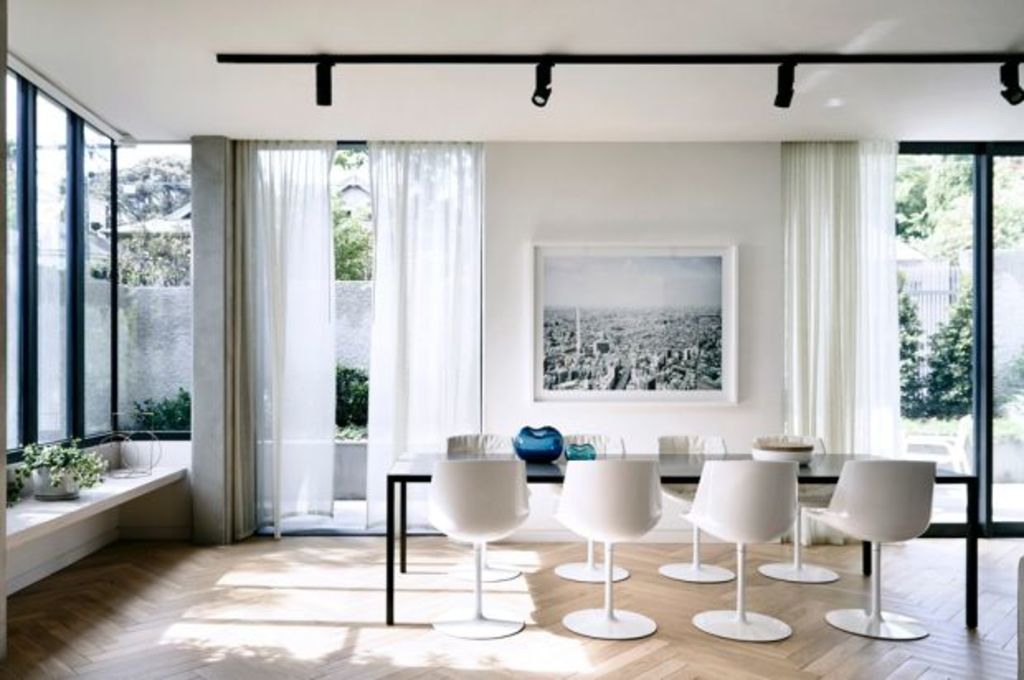
There are the Oscars for actors, the Olympics for athletes and – perhaps – the Australian Interior Design Awards for architects and designers. Who doesn’t love some glitz, competition and, of course, winners?
Unfortunately, we have to wait until June to find out the final winners but the shortlist for the 2017 Australian Interior Design Awards reveals some interesting trends on the home front.
This year 48 projects have been shortlisted for the residential design award and 17 projects have made the list for residential decoration.
Overall, there was a record 525 entries across all categories, with Victoria having the biggest number – 92 – of projects on the shortlist.
Emerging trends include the use of discrete retreat spaces, dark colours, pure-form materials and the emergence of smaller houses and sites.

Six Brookville Rd by Neometro and MA Architects. Shortlisted for the Residential Design Award. Photo: Derek Swalwell
“The standard was excellent,” says steering committee member Geraldine Maher of Jackson Interiors.
“There’s a lot of really thoughtful, intelligent design evident this year that addressed the pragmatic demands of residential design but also the intangible moments of magic that a client may not expect.”
As more adult children continue to live at home, open-plan design doesn’t work. Maher has noticed a trend towards smaller, discrete retreat spaces.

House Collins by Tribe Studio Architects. Shortlisted for the Residential Design Award. Photo: Katherine Lu
“You may have a library or a den space or a niche where you can read a book – these are spaces where you can retreat to get respite.”
There is also a shift towards dark, warm finishes, which can be inviting. Those spaces are cool and shaded in summer but warm and cosy in winter.
Architects and designers are using materials in their pure form, she says. Exposed blockwork might be balanced with a warm finish such as timber.

Belmont House by Kennedy Nolan. Shortlisted for the Residential Design Award. Photo: Derek Swalwell
“You don’t have to have a huge house to have a well-designed house,” Maher says. “It’s more important to spend time with your family than be vacuuming five bedrooms and cleaning three bathrooms.”
It’s interesting to see a move towards smaller houses due to site or budget constraints. People are realising that every bedroom doesn’t need an ensuite bathroom. Rooms are becoming more flexible: for example, a study might also serve as a guest room. Instead of having two bathrooms, a bathroom and separate toilet might be a more economical solution.
“This is the largest number of entries the program has seen since 2012 – a sign that the interior design profession is generating a large number of highly creative and excellent projects,” says jury convenor Professor Joanne Cys from the University of South Australia.

Belmont House by Kennedy Nolan. Shortlisted for the Residential Design Award. Photo: Derek Swalwell
The newest category, the award for interior design impact (established in 2015), is building in strength, she says.
The awards, now in their 14th year, a partnership between the Design Institute of Australia (DIA) and Architecture Media’s Artichoke magazine, will be announced on June 9. Other categories include retail design, hospitality design, workplace design, public design, installation design, sustainability advancement and emerging interior design practice. There is also a best of state award and the premier award for Australian interior design.
We recommend
States
Capital Cities
Capital Cities - Rentals
Popular Areas
Allhomes
More
- © 2025, CoStar Group Inc.

